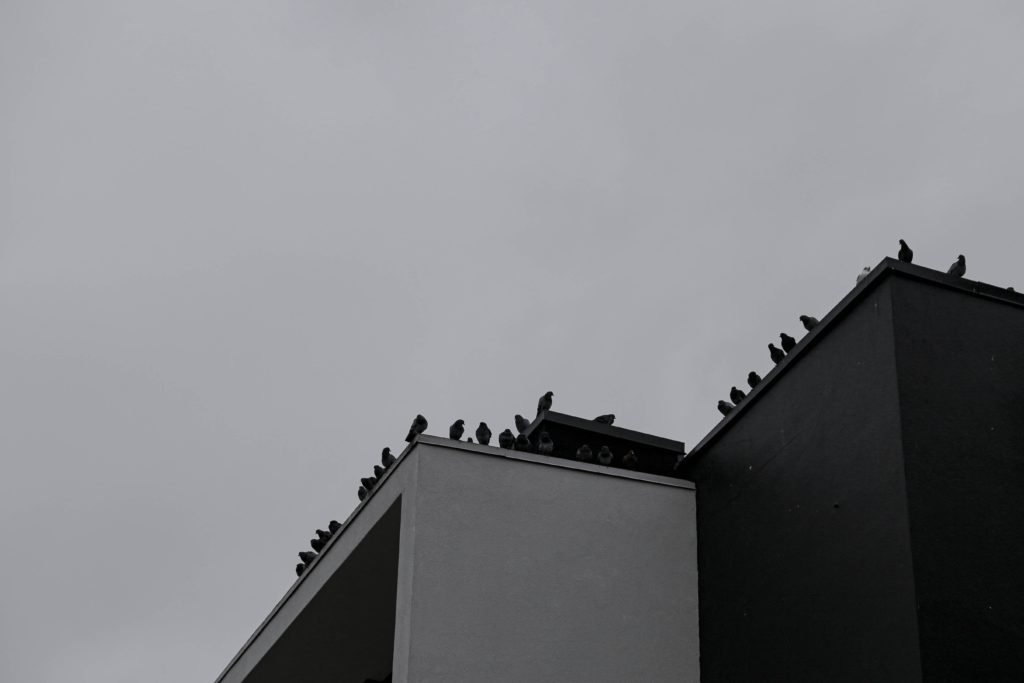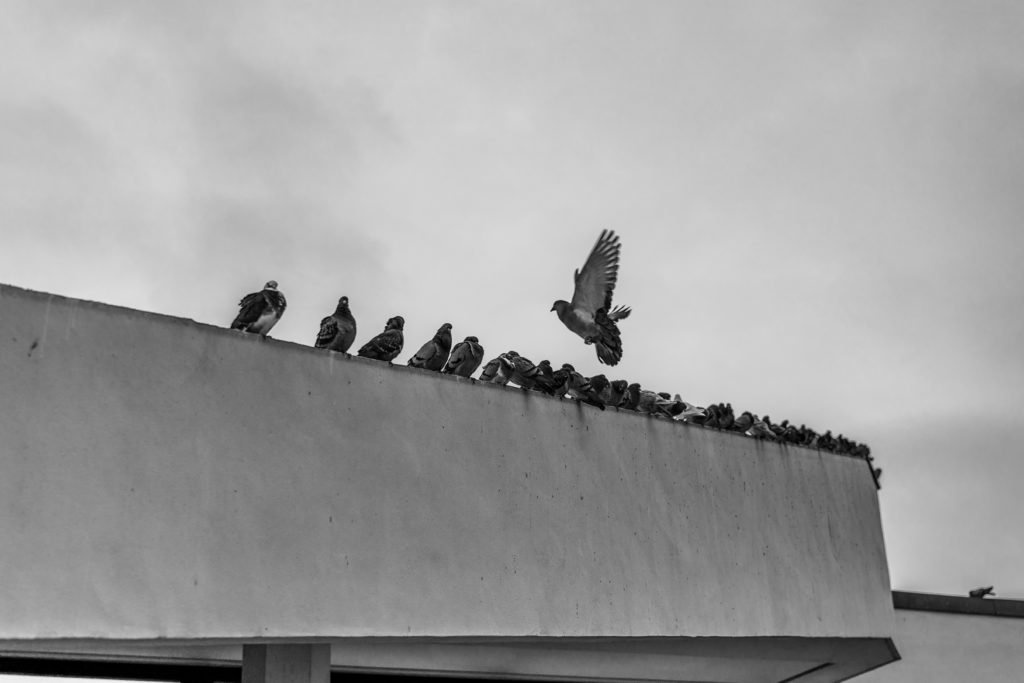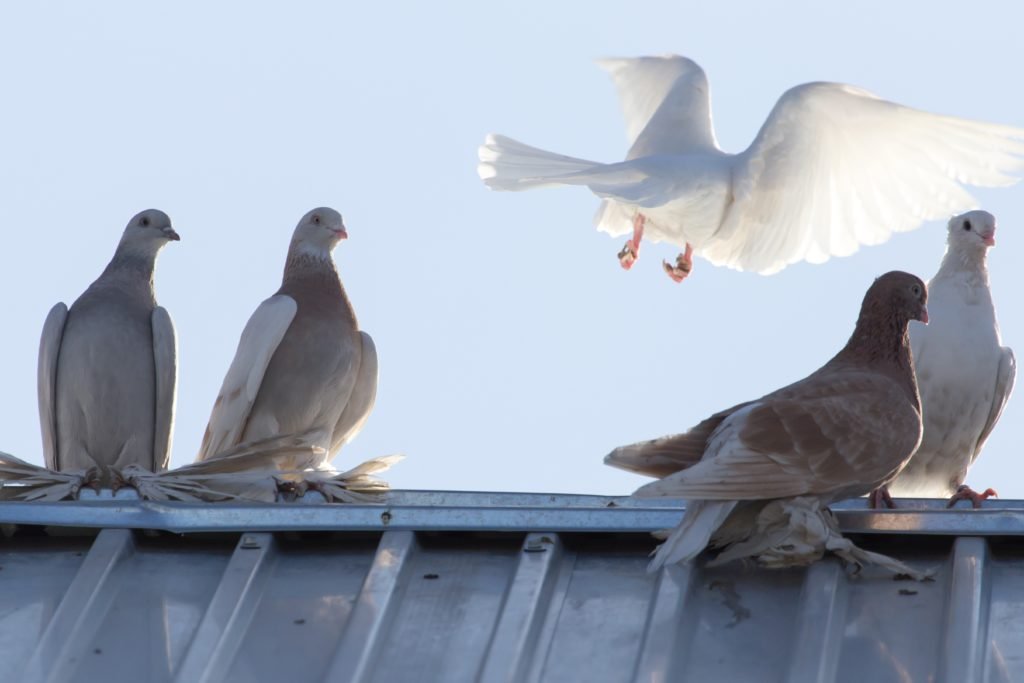Bird exclusion is a vital part of sustaining a secure and sanitary environment in healthcare settings of all types. The existence of birds on hospital properties in particular carries considerable risks, such as the transmission of disease, tainting of sterile areas, and destruction of infrastructure. Hence, it is imperative for hospitals to execute effective strategies to keep birds away.
This article aims to provide an overview of the significance of avian control for healthcare establishments, the dangers associated with feathered trespassers, and effective strategies for bird exclusion. Furthermore, it will discuss the implementation of a comprehensive avian prevention plan and methods for assessing the success of bird prevention efforts.
By adhering to and enacting these measures, hospitals can guarantee the welfare of patients, staff, and visitors, as well as sustain a clean and safe environment for healthcare delivery.
Key Takeaways
- Avian prevention plans are necessary to mitigate the risks associated with avian intrusion at hospitals.
- Monitoring techniques, such as visual surveys, are used to gather data on bird activity.
- Data analysis helps identify patterns and trends, evaluate prevention measures, and determine the need for further prevention measures.
- Continuous evaluation and improvement are essential to enhancing the effectiveness of bird exclusion plans in hospitals.
Importance of Avian Control at Hospital Facilities
The implementation of effective avian control measures for healthcare facilities of all types is of great significance in maintaining a hygienic and safe environment for patients, staff, and visitors.
Infection control is a crucial aspect, as it plays a vital role in preventing the spread of disease. Birds, particularly pigeons and seagulls, can carry various pathogens and parasites that pose a significant risk to human health. By excluding birds from these areas, the chances of disease transmission can be greatly reduced, ensuring the safety and well-being of patients, staff, and visitors.
Furthermore, regulations require healthcare facilities to meet certain standards regarding cleanliness and infection control. Bird infestations can compromise these standards, potentially leading to penalties and legal issues. Thus, implementing avian control measures is essential to complying with health regulations and maintaining the reputation and credibility of healthcare facilities in general.
In addition to health concerns, bird infestations can also increase maintenance costs. Birds can cause damage to buildings, equipment, and infrastructure through their droppings, nesting activities, and aggressive behaviour. This can result in costly repairs and the replacement of damaged items. By implementing avian control measures, healthcare facilities can mitigate these risks and reduce maintenance expenses.
Patient safety is paramount in hospitals. Birds can pose a physical risk to patients, especially those with compromised immune systems or mobility issues. By excluding birds, the likelihood of bird-related accidents, such as bird attacks or falls due to slippery bird droppings, can be minimized, ensuring the safety of patients and promoting their recovery.
Lastly, bird exclusion at healthcare facilities also has a positive environmental impact. Birds, particularly invasive species, can disrupt local ecosystems and displace native bird populations. By implementing avian control measures, healthcare facilities can contribute to preserving local biodiversity and maintaining ecological balance.
In conclusion, the implementation of effective avian control measures at hospitals is crucial for infection control, compliance with health regulations, cost reduction, patient safety, and environmental preservation. By prioritizing bird exclusion, healthcare facilities can provide a hygienic and safe environment that promotes the well-being of patients, staff, and visitors.


Risks Associated with Feathered Intruders
Feathered intruders at healthcare facilities pose various hazards, including the spread of pathogens and potential damage to equipment and infrastructure.
Firstly, these avian intruders can be carriers of disease and parasites that can be transmitted to patients, staff, and visitors, leading to health hazards within the facility. Avian droppings, feathers, and nesting materials can contaminate surfaces and the air, increasing the risk of infection.
Secondly, the presence of birds can result in property damage. Birds can peck at building materials, causing structural damage, and their droppings can corrode equipment and infrastructure, leading to costly repairs and replacements. Additionally, bird nests and debris can block ventilation systems, compromising air quality and potentially leading to respiratory issues.
Thirdly, bird noise can interfere with a patient’s ability to rest and recover by disrupting the healing environment. Furthermore, the accumulation of bird droppings can produce foul odours, further compromising the facility’s atmosphere.
Lastly, legal implications may arise if a facility fails to address bird infestations, as regulatory authorities may impose fines or take legal action for not maintaining a safe and clean environment.
Considering these risks, implementing effective bird exclusion measures is crucial for healthcare facilities to ensure patient safety, protect property, maintain a quiet environment, and comply with regulations.
Effective Strategies for Keeping Birds Away
Implementing proper bird deterrent measures is essential for maintaining a safe and hygienic environment in healthcare facilities. Feathered intruders pose significant risks, including the spread of disease and potential damage to hospital equipment. Thus, it is crucial to employ effective strategies to keep birds away.
One effective strategy involves using deterrents such as visual ones. Visual deterrents, such as reflective surfaces or scarecrows, can also discourage birds from roosting or nesting in the vicinity.
Furthermore, netting solutions can be employed to physically block birds from accessing certain areas. This method is particularly useful for large open spaces or outdoor areas where birds may gather or roost. Installing nets can effectively prevent birds from entering these spaces, minimizing the potential risks associated with their presence.
Implementing effective bird deterrent measures is vital for ensuring the safety and cleanliness of healthcare facilities. By attracting predators, using deterrents, and employing netting solutions, hospitals can successfully keep birds away, reducing the risk of disease transmission and equipment damage.
Implementing a Comprehensive Avian Prevention Plan
To effectively mitigate the presence and potential risks associated with avian intrusion, healthcare facilities can establish a comprehensive avian prevention plan. This plan should consider cost-effective measures, environmental impact, legal considerations, training staff, and collaborating with bird control experts.
First and foremost, cost-effective measures should be implemented to ensure the effectiveness of the prevention plan without incurring unnecessary expenses. This may include installing bird spikes or netting in areas where birds commonly perch or nest, as well as using visual deterrents such as predator decoys or reflective devices.
In addition to cost considerations, healthcare facilities must also take into account the environmental impact of their prevention measures. It is important to use methods that do not harm birds or disrupt their natural habitats. For example, consider using non-toxic bird repellents or implementing landscaping changes that discourage birds from congregating near the facility.
Training staff is an essential component of an effective avian prevention plan. Employees should be educated on the importance of bird exclusion, how to identify potential problem areas, and the appropriate actions to take when encountering avian intrusion. This will help create a unified effort to prevent birds from congregating in or around the facility.
Finally, collaborating with bird control experts like the team at Icon Bird can provide valuable expertise and support in implementing a comprehensive avian prevention plan. These professionals can assess the facility’s specific needs and recommend the most effective strategies for bird exclusion. Their knowledge and experience can help ensure that the prevention plan is targeted and efficient.
By considering cost-effective measures, environmental impact, legal considerations, training staff, and collaborating with bird control experts, hospitals can establish a comprehensive avian prevention plan that effectively mitigates the risks associated with avian intrusion.
Evaluating the Success of Your Prevention Efforts
One crucial aspect of avian prevention plans is the ongoing evaluation of their effectiveness in mitigating the risks associated with avian intrusion. Monitoring techniques play a vital role in assessing the success of bird exclusion measures implemented in hospitals. These techniques involve the use of various methods, such as visual surveys and follow-up visits, to gather data on bird activity and behaviour.
The collected data is then subjected to thorough analysis to identify patterns and trends, enabling the evaluation of the efficacy of existing prevention measures. Data analysis is a key component of evaluating the success of bird exclusion efforts. By examining the collected data, healthcare facilities can determine whether the implemented prevention strategies are effectively deterring avian intrusion or if further measures need to be implemented. Performance evaluation is essential in identifying areas for improvement and ensuring that the prevention plan is continuously refined to enhance its effectiveness.
Success indicators are used to measure the achievement of specific goals and objectives set forth in the avian prevention plan. These indicators can include the number of avian intrusions recorded, the frequency and severity of bird-related incidents, and the level of satisfaction among hospital staff and patients regarding the effectiveness of the prevention measures.
Continuous improvement is a fundamental principle in avian prevention plans. By regularly evaluating the success of prevention efforts and analyzing the collected data, hospitals can identify areas for improvement and implement necessary changes to enhance the overall effectiveness of the bird exclusion plan.

Frequently Asked Questions
1. What are the potential health risks associated with bird infestations in healthcare facilities?
Health hazards associated with bird infestations in healthcare facilities include:
- Disease transmission: Birds can carry various pathogens, such as bacteria, viruses, and parasites. These pathogens can be transmitted to humans through droppings, feathers, or direct contact. This poses a risk to patients, staff, and visitors, potentially causing infections and other health issues.
- Contamination control issues: Bird droppings and feathers can contaminate the environment at healthcare facilities of all types. This can lead to the spread of pathogens and compromise the cleanliness and sterility of the facility. Contamination control becomes crucial in preventing the transmission of diseases.
To mitigate these risks, hospitals and other healthcare facilities need to:
- Implement strict prevention methods: This includes effective bird exclusion strategies, such as bird netting, bird spikes, and bird deterrents, to prevent birds from entering or congregating at the facility. Regular inspections and maintenance of the facility’s infrastructure are also necessary to identify and seal any potential entry points for birds.
- Adhere to safety regulations: Healthcare facilities must follow safety regulations and guidelines that ensure proper sanitation practices. This includes regular cleaning and disinfection of areas affected by bird droppings, as well as the use of personal protective equipment (PPE) for those involved in cleaning and maintenance tasks.
By addressing these potential health risks and implementing appropriate prevention and control measures, all healthcare facilities can create a safe and hygienic environment for patients, staff, and visitors.
2. Can bird droppings pose a threat to patients and staff in hospitals?
Bird droppings in hospitals pose a significant threat to patients and staff due to the potential transmission of diseases. To ensure patient safety and minimize disease transmission, prevention methods such as bird exclusion should be implemented. Bird exclusion involves the use of physical barriers and/or deterrents to prevent birds from entering hospital property.
This approach not only reduces the risk of diseases but also lowers the maintenance costs associated with bird infestations. Additionally, bird exclusion measures have a positive environmental impact by reducing the need for harmful pesticides and maintaining a hygienic healthcare environment.
3. How do birds gain access to hospitals?
Birds can gain access to hospitals through various entry points, such as open windows, ventilation systems, and damaged areas of the building. Once inside, they may engage in nesting behaviour, creating potential health hazards for patients and staff.
Bird control and prevention methods are essential to mitigate the impact on patient care. These methods include installing bird netting, spikes, and deterrents to discourage birds from entering healthcare facilities and nesting in vulnerable areas.
4. What are some common signs that indicate the presence of birds in a healthcare facility?
Common signs that indicate the presence of birds in healthcare facilities include:
- Bird droppings
- Nests
- Feathers
- Chirping sounds
These signs are often observed in areas such as:
- Rooftops
- Windowsills
- Ledges
- Ventilation systems
Bird control methods and bird deterrents can be implemented to prevent birds from entering the facility. Understanding bird nesting habits and behaviour patterns can help in developing effective bird exclusion techniques, ensuring a bird-free environment in healthcare facilities.
5. Are there any ethical considerations to keep in mind when implementing bird exclusion measures for hospitals?
Ethical considerations should be taken into account when implementing bird exclusion measures on and around hospital properties. Hospital regulations may dictate the specific methods that can be used for bird control. Additionally, wildlife conservation should be considered, ensuring that the chosen methods do not harm or kill birds unnecessarily.
Hospital Property Considerations for Public Health
In summary, avian control in healthcare facilities is paramount due to the accompanying risks associated with feathered intruders.
By utilizing efficient strategies for bird exclusion, such as using physical barriers and deterrents, healthcare facilities can prevent the entry of birds and reduce the spread of diseases and harm to property.
It is essential for healthcare facilities to create and execute an all-inclusive avian prevention plan and routinely assess the effectiveness of their prevention measures to guarantee a secure and bird-free environment.
Icon Bird is the Solution to Your Bird Problem
Icon Bird is a leading expert in bird prevention, with years of experience and a proven track record in providing effective solutions for bird-related problems. They specialize in assisting property owners with bird infestations and lessening the damage these pests cause with a team of highly skilled professionals.
Their expertise lies in understanding the behaviour and habits of different bird species, allowing them to develop tailored prevention strategies. Icon Bird offers a wide range of services, including bird netting, bird spikes, bird repellents, and bird control systems. These solutions are designed to deter birds from nesting or roosting in unwanted areas, such as rooftops, balconies, and outdoor spaces.
Icon Bird’s success is attributed to their commitment to using humane and environmentally friendly methods. They prioritize the welfare of the birds while ensuring the long-term effectiveness of their prevention measures. Their team is equipped with the latest technologies and techniques, ensuring that their clients receive the best possible bird prevention solutions. Whether it’s a smaller property or a large commercial site, Icon Bird has the experience and expertise to effectively tackle any bird-related issue.

